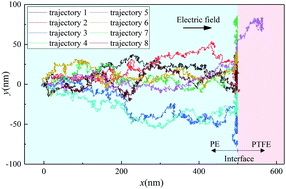First-principles investigation of band offset and charge transfer characteristics at the PE/fluorinated layer interface
Abstract
Polymers, especially polyethylene (PE), are widely employed as insulating materials in electrical power transmission systems. However, the insulation still faces the problem of space charge, which distorts the electric field distribution and accelerates electrical aging. Experimental results show that after the fluorination process, less charge injection occurs compared with pure PE. To clarify the mechanism, classical molecular dynamics was employed to build a PE/fluorinated layer interfacial model and first principles calculation was utilized to get the band offset at the interface. The results calculated by both the bulk plus band lineup method and the layer-decomposed density of states method show that the energy band of the fluorinated PE layer is overall lower than that of the PE side, and the band offsets are around 2 eV. Charge transport results based on Marcus theory and kinetic Monte Carlo simulations also show that charge can easily accumulate at the interfacial area under an electric field and the band offset can suppress charge injection. The conduction band offset acts as an energy barrier for the excess electrons at the fluorinated layer side to cross the interface, while the valence band offset has the same effect on hole transport because of the energy barrier caused by the inverted region. Our findings provide a fundamental and theoretical basis for material modification and space charge inhibition.



 Please wait while we load your content...
Please wait while we load your content...